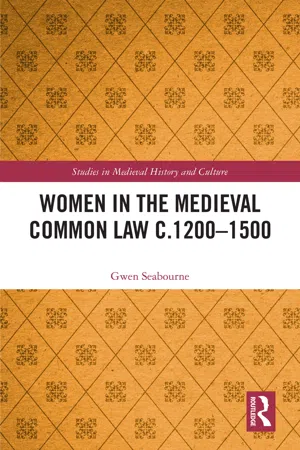
Women in the Medieval Common Law c.1200–1500
Gwen Seabourne
- 176 pages
- English
- ePUB (mobile friendly)
- Only available on web
Women in the Medieval Common Law c.1200–1500
Gwen Seabourne
About This Book
This book examines the view of women held by medieval common lawyers and legislators, and considers medieval women's treatment by and participation in the processes of the common law. Surveying a wide range of points of contact between women and the common law, from their appearance (or not) in statutes, through their participation (or not) as witnesses, to their treatment as complainants or defendants, it argues for closer consideration of women within the standard narratives of classical legal history, and for re-examination of some previous conclusions on the relationship between women and the common law. It will appeal to scholars and students of medieval history, as well as those interested in legal history, gender studies and the history of women.
Frequently asked questions
Information
Part I
Unions and divisions
All that need be said in general about the status of women is that the widow or spinster was an unfettered litigant, while the married woman was unable to appear without her husband, whom she was bound to obey…
1 ‘Their position is inferior to that of men’7
Table of contents
- Cover
- Half Title
- Series Page
- Title Page
- Copyright Page
- Dedication
- Table of Contents
- List of figures
- Preface
- Abbreviations and citation conventions
- Introduction: women, the common law and the legal historians
- Part I Unions and divisions: women and the common law
- Part II Audible and inaudible; credible and not credible: women in the legal process
- Part III Women’s complaints and complaints of women
- Conclusion: the future of women’s legal past
- Select bibliography
- Index